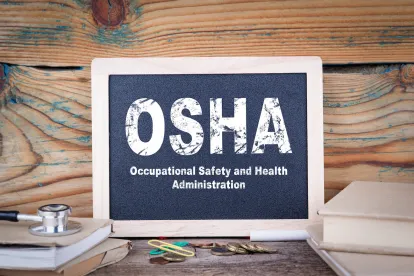An employer who requires or permits employees to work from their homes has limited responsibilities for the safety and health of the employee’s working conditions. The Occupational Safety and Health Administration (OSHA) sharply distinguishes between home offices and other home workplaces, such as home manufacturing facilities in which, for example, employees assemble electronic parts.
Home Offices
OSHA’s compliance directive on home offices is crystal clear:
- “OSHA will not conduct inspections of employees’ home offices.
- “OSHA will not hold employers liable for employees’ home offices, and does not expect employers to inspect the home offices of their employees.
- “If OSHA receives a complaint about a home office, the complainant will be advised of OSHA’s policy. If an employee makes a specific request, OSHA may informally let employers know of complaints about home office conditions, but will not follow-up with the employer or employee.”
CPL 02-00-125, “Home-Based Worksites” (Feb. 25, 2000).
Other Home-Based Worksites, Such as Home-Based Manufacturing
For other home-based worksites, such as home-based manufacturing facilities, OSHA’s policy is different. For them, “OSHA will only conduct inspections . . . when OSHA receives a complaint or referral that indicates that a violation of a safety or health standard exists that threatens physical harm.”
As to the scope of the employer’s responsibilities, OSHA’s compliance directive states that employers “are responsible . . . for hazards caused by materials, equipment, or work processes [that] the employer provides or requires to be used in an employee’s home.” Consider the case of an industrial sewing machine that lacks a necessary pulley guard.
Recording Injuries Incurred While Working at Home
Suppose an employee is injured while working at home. Would the case be considered work-related and thus (if all other recording criteria are met) recordable on the OSHA 300 log?
Fortunately, the OSHA regulation at 29 C.F.R. § 1904.5(b)(7) answers the question clearly:
How do I decide if a case is work-related when the employee is working at home? Injuries and illnesses that occur while an employee is working at home, including work in a home office, will be considered work-related if the injury or illness occurs while the employee is performing work for pay or compensation in the home, and the injury or illness is directly related to the performance of work rather than to the general home environment or setting.
The regulation offers the following examples:
- “[I]f an employee drops a box of work documents and injures his or her foot, the case is considered work-related.”
- “If an employee’s fingernail is punctured by a needle from a sewing machine used to perform garment work at home, becomes infected and requires medical treatment, the injury is considered work-related.”
- “If an employee is injured because he or she trips on the family dog while rushing to answer a work phone call, the case is not considered work-related.”
-
“If an employee working at home is electrocuted because of faulty home wiring, the injury is not considered work-related.”
Must An Employer Record on the OSHA 300 Log A Case of Coronavirus?
Employers must record cases of the coronavirus only if the employer believes that the employee was exposed at work, and the case is diagnosed by a laboratory test or healthcare provider as having been caused by the coronavirus, and the case is otherwise recordable.
There is no presumption that an employee who has come down with a case of coronavirus was infected at work. Instead, for the illness to be considered work-related, there must be evidence that it was contracted at work. If there is no such evidence, the case is not recordable.
Moreover, work relatedness is not enough. The employee must have incurred at least one day away from work or one day of work restrictions, or medical treatment beyond first aid.




 />i
/>i

